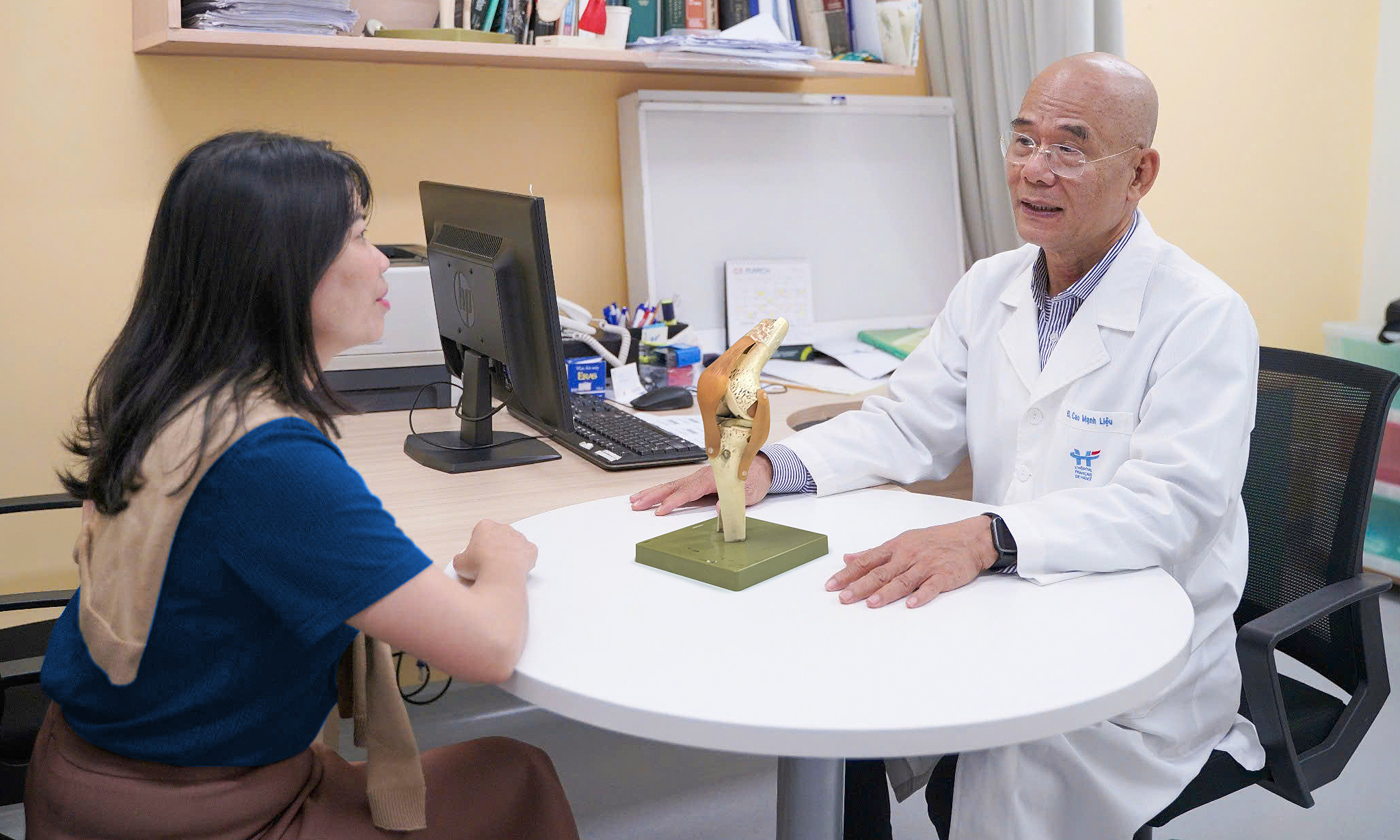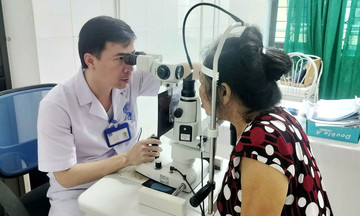Doctor Cao Manh Lieu, from the Orthopedic Trauma Department of Viet Phap Hanoi Hospital, says osteoarthritis is a common condition in middle-aged and elderly people. Initially, the pain is mild and fleeting, but it gradually becomes more frequent, intensifying with prolonged walking, standing, or changes in weather.
For cases of stage 3 or 4 osteoarthritis, where the cartilage is almost completely worn down, the joint space is narrowed, movement is painful, and medication and physiotherapy are no longer effective, knee replacement surgery is the recommended treatment option.
Knee replacement is one of the most common and effective surgical procedures for treating severe knee conditions or when non-surgical treatments fail. However, patients and their families often have many questions before deciding on surgery.
Here are 5 frequently asked questions Doctor Lieu receives from his patients:
 |
A doctor consults with a patient about knee treatment. Photo courtesy of the hospital |
A doctor consults with a patient about knee treatment. Photo courtesy of the hospital
What is the artificial knee joint made of?
Artificial knee joints are designed with two main components made of metal and bioplastic. The metal parts are typically inert metals like titanium, cobalt, and chromium, which bond well with bone and don't cause irritation or hypersensitivity reactions. These are attached to the femur and tibia after the damaged bone and cartilage have been removed. The lifespan of the metal components in the body can reach 20–30 years.
The bioplastic component is made of high molecular weight polyethylene and replaces the natural joint space, enabling smooth joint movement and reducing friction. It is placed between the two metal surfaces, creating a cushioning layer that helps patients move more easily after surgery.
How long does an artificial knee joint last?
Modern artificial joints are highly durable, lasting an average of over 20 years, and potentially longer with proper care. The selection of a suitable joint type, high-quality materials, and precise surgical technique significantly influence its longevity.
Doctors will recommend the most appropriate joint type based on the patient's age, activity level, and choose a suitable surgical technique for each individual.
Is knee replacement surgery painful?
Patients receive either spinal anesthesia or general anesthesia, so they don't feel pain during the surgery. Post-operatively, various pain management methods help control pain and promote rapid recovery.
Typically, patients can sit up and walk with assistance within 2–3 days, leave the hospital after 5–7 days, and resume near-normal activities within 6–8 weeks, depending on their physical condition. Full recovery may take a few months, but the improvement in quality of life is significant.
Will movement be limited after knee replacement?
The goal of knee replacement surgery is to relieve osteoarthritis pain and improve mobility. After recovery, patients can walk, climb stairs, cycle, and swim. However, high-impact sports and activities are not recommended.
What can be done to promote knee recovery?
Post-surgery, physical therapists and rehabilitation specialists guide patients through exercises to help their bodies adapt to the new knee joint and accelerate recovery.
According to Doctor Lieu, knee replacement is more technically challenging than joint replacements in other areas because it alters the natural kinematics of the knee, affecting the patient's post-operative condition. Therefore, patients should thoroughly research before undergoing knee replacement and choose experienced surgeons supported by modern medical equipment.
Continuous monitoring throughout recovery is essential, with close collaboration between orthopedic surgeons and physical therapists. A well-equipped rehabilitation facility allows patients to begin exercising early and correctly, shortening recovery time and maximizing the benefits of surgery.
Le Nga












